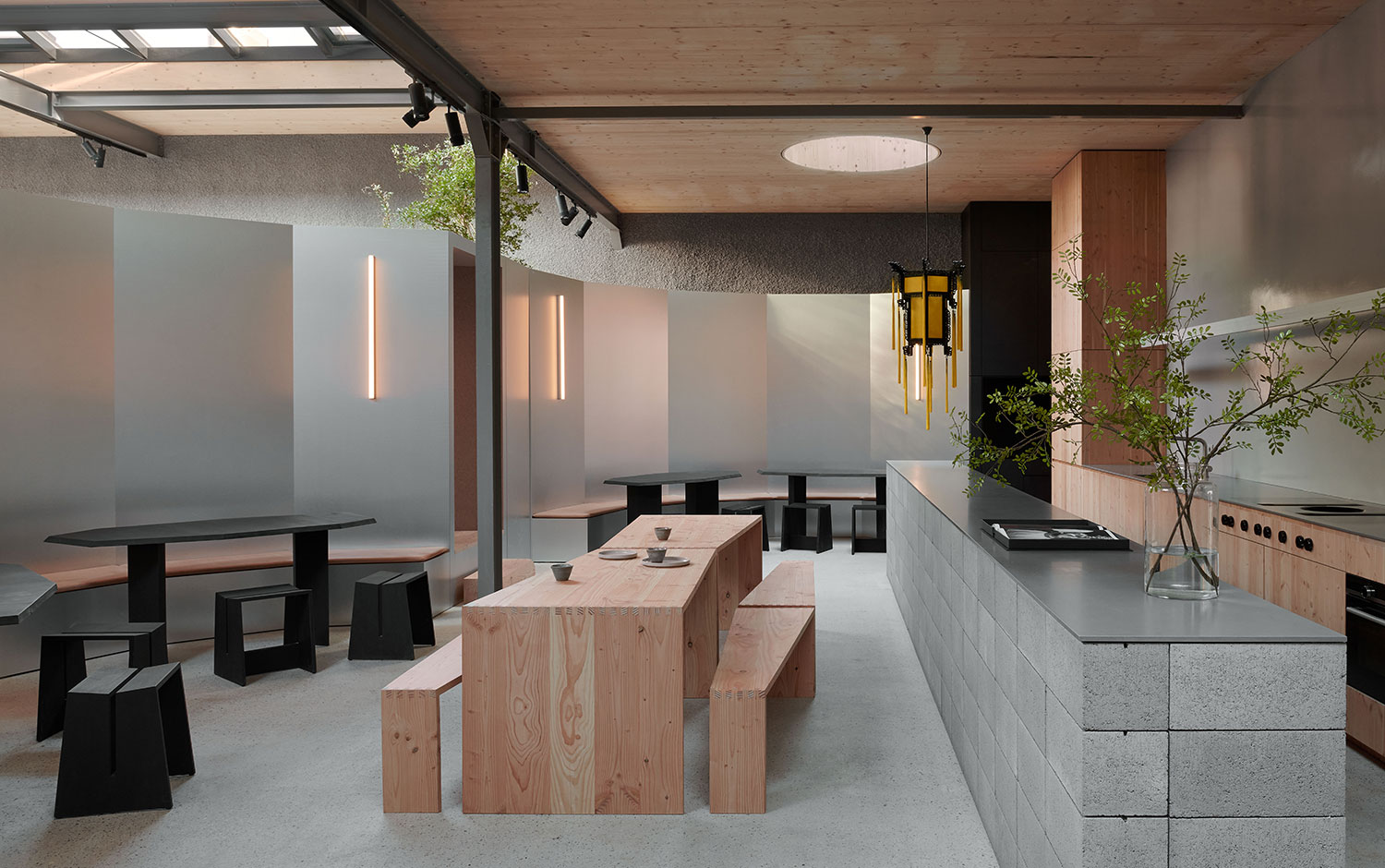
How can we create a dialogue between people and the space they are in? How do we invite people to reconnect to their physical surroundings without losing our rich digital culture?
These are some of the questions that were playing on our minds when we began building a new home base in the west of Amsterdam. They didn’t arrive out of anywhere: our work as a studio tries to bring people back to the real world – not by removing technology from life, but by embedding it in the realm of the senses to spark connections with our real-world surroundings. In our day-to-day at Random, we are busy creating things that inspire others and make them feel something new, so it’s no surprise that our own space needs to nurture us to meet those goals.
Our new studio at Gillis van Ledenberchstraat gave us a fresh start to experiment with: a blank slate to explore this idea of Interactive Space in our own home, paying particular attention to sustainability in the design. The dream was of an immersive, multi-sensory space that interacts with us in real-time. While technology is the beating heart of this vision, it is in harmony with the rhythms and elements of the natural world. To that end, the spatial design of our new studio needed to seamlessly integrate into this vision – which is why we asked our old friends at x+l to join us on our journey.
Amsterdam-based x+l are Xander Vervoort and Leon van Boxtel, who have been with us since the beginning – they designed our first studio. The space they created back in the day reflected our needs as we were figuring out what Random was; it was DIY, super flexible, and ever-evolving. In Leon’s own words, the new space has a certain maturity to it that responds to how the studio has grown up. The design has its roots in a paired-back, organic aesthetic; a simple backdrop to the often frenetic energy of studio life.
Small design choices invite a deep focus on the work at hand, such as the walls, which are made from recycled newspaper that absorbs sound to limit disruption as much as possible. Everything was designed from scratch for the studio using a muted color palette and wood, concrete, and metal with a range of different finishes, each detail made to age well and evolve. Starting with the social space of the Canteen at the heart of the building, the designers built outwards, creating open spaces that accommodate different uses such as the Cinema which can be used for presentations or gatherings, and also closed off with curtains.
Creating the space from scratch with the x+l team meant that we could design a space that not only worked for us but also the environment. Sustainability could be part of the very fabric of the building – from its inner workings to the sustainable construction materials we used via the studio’s outdoor spaces that connect us to the city. We chose to make the entire building gas-free, heating it instead using heat pumps that run on electricity provided by a sustainable supplier and are built cleanly into the spatial design. Our 300m2 roof garden brings a new little corner of nature to Amsterdam West. It also provides us with the natural insulation and retains rainwater effectively, slowing down the drainage and alleviating the sewage system.
Against the calm backdrop of the spatial design, we have built an interconnected technical infrastructure – something we call a Tech Theatre – that allows us to control the light, temperature, spatial sound system, artworks, and any other elements we want to include. Rather than trying to isolate the ‘perfect’ conditions for workplace efficiency, we see this system as a living entity that can behave in its way, responding to the needs of its inhabitants as well as the ever-changing climate outside. A ‘tuning in’ that naturally affects our mood and wellbeing, which in turn feeds our creativity.
We know, for example, that light and sound impact our focus and concentration.
So, we commissioned artist Arnout Meijer to make a site-specific light installation that reflects the behavior of the sky, connecting the studio to its outside surroundings. Mimicking the minute shifts of the sun’s movements and color intensity or the clouds passing by each day, the installation projects an ever-changing layer of light on the ceiling and back wall. Though subtle, the tinted light interacts with the muted tones of the spatial design to draw attention to those small moments of change that often go unnoticed. In doing so, Arnout is interested in how this “gesture to the outside world” can affect our perception of our everyday surroundings, making each day in the studio feel slightly different.
With the Tech Theatre in place, we are researching what behaviors we want the building to play out and how it can dialogue with the daily rhythms of Random Studio. For example, the day starts with a need for focus and flow. What would a ‘Flow’ theme look and feel like as a dynamic interplay between light, sound, smell, and climate?
The spaces within the building are flexible, used daily by the team but also built to welcome new connections and conversations that expand our studio ecosystem. The
studio contains a lab, where we can experiment with new tech; art installations; a restaurant, where the team each has a veggie meal for lunch every day but that will also host themed sensorial dinners; a theatre, where we can do our presentations, host speakers from different disciplines, but also mimic real-life spaces for our client demos; an exhibition space, where we can show work by the team but also invite other artists; and finally the general studio space, which at 750m2 is large enough to rent desks to people, creating a cross-pollination of ideas across industries. We’re looking forward to having you over.
Published
17.04.2022











